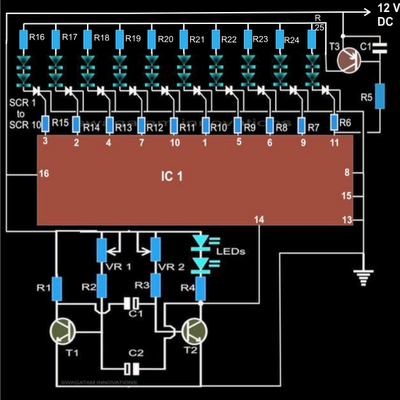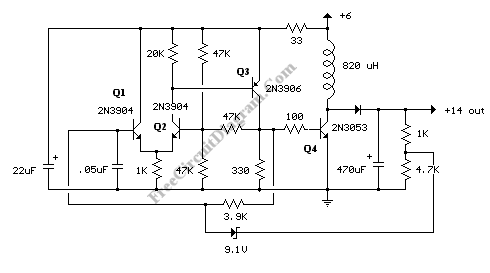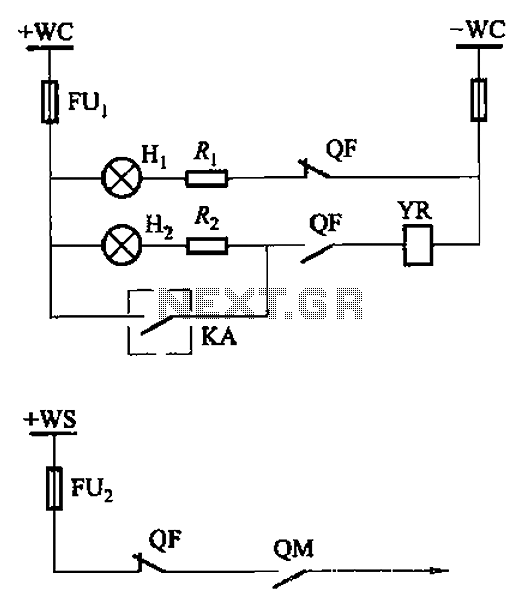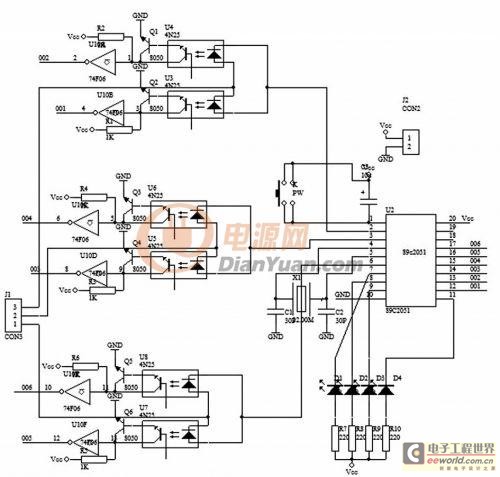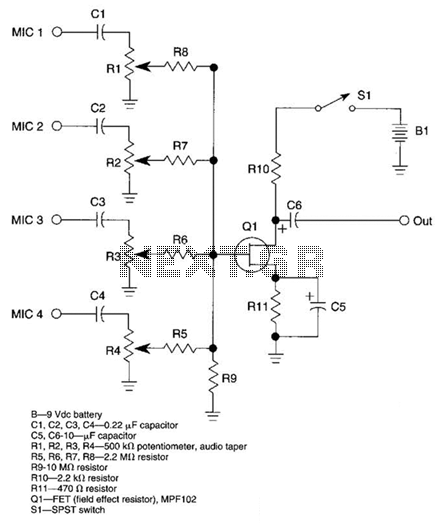
Constantly changing light and sound analog controller circuit 04
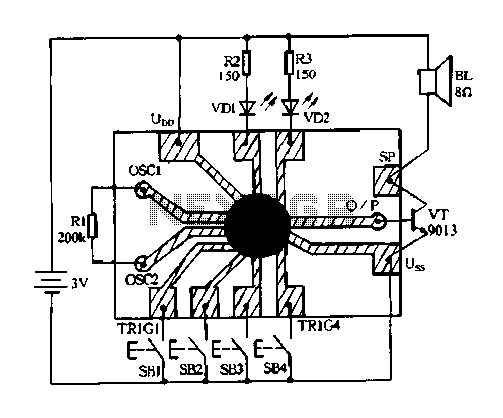
Constantly changing light and sound analog controller circuit 04
The circuit designated as the "Constantly Changing Light and Sound Analog Controller Circuit 04" is designed to modulate both light and sound outputs in a dynamic manner. This type of circuit typically employs various analog components such as resistors, capacitors, transistors, and operational amplifiers to achieve the desired effects.
The primary function of this circuit is to create an oscillating signal that can control light-emitting diodes (LEDs) and audio outputs, generating a visually and audibly stimulating experience. The circuit may utilize a combination of astable multivibrator configurations to produce a square wave that drives the light and sound elements.
In a standard implementation, the circuit would include a power supply to provide the necessary voltage levels for the components. The oscillation frequency can be adjusted using variable resistors (potentiometers) or capacitors, allowing for customization of the light and sound effects.
LEDs can be connected in parallel or series configurations, depending on the desired brightness and color effects. The audio output can be achieved through the use of a small speaker or piezo buzzer, which is driven by the oscillating signal.
To ensure stability and reduce noise in the output signals, decoupling capacitors may be employed near the power supply connections. Additionally, filtering capacitors can be used to smooth out the output waveforms, resulting in a more pleasant auditory experience.
Overall, the Constantly Changing Light and Sound Analog Controller Circuit 04 serves as an excellent example of how analog components can be utilized to create engaging multimedia experiences through the interplay of light and sound.Constantly changing light and sound analog controller circuit 04
The circuit designated as the "Constantly Changing Light and Sound Analog Controller Circuit 04" is designed to modulate both light and sound outputs in a dynamic manner. This type of circuit typically employs various analog components such as resistors, capacitors, transistors, and operational amplifiers to achieve the desired effects.
The primary function of this circuit is to create an oscillating signal that can control light-emitting diodes (LEDs) and audio outputs, generating a visually and audibly stimulating experience. The circuit may utilize a combination of astable multivibrator configurations to produce a square wave that drives the light and sound elements.
In a standard implementation, the circuit would include a power supply to provide the necessary voltage levels for the components. The oscillation frequency can be adjusted using variable resistors (potentiometers) or capacitors, allowing for customization of the light and sound effects.
LEDs can be connected in parallel or series configurations, depending on the desired brightness and color effects. The audio output can be achieved through the use of a small speaker or piezo buzzer, which is driven by the oscillating signal.
To ensure stability and reduce noise in the output signals, decoupling capacitors may be employed near the power supply connections. Additionally, filtering capacitors can be used to smooth out the output waveforms, resulting in a more pleasant auditory experience.
Overall, the Constantly Changing Light and Sound Analog Controller Circuit 04 serves as an excellent example of how analog components can be utilized to create engaging multimedia experiences through the interplay of light and sound.Constantly changing light and sound analog controller circuit 04
